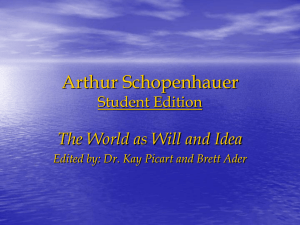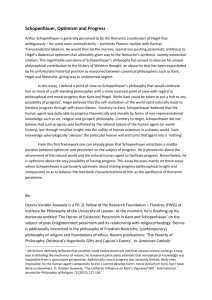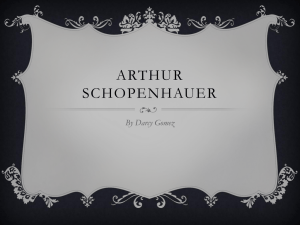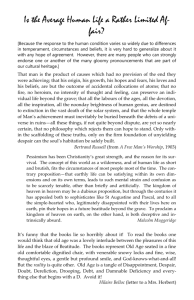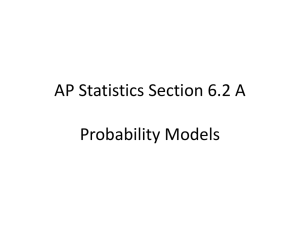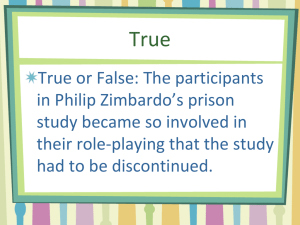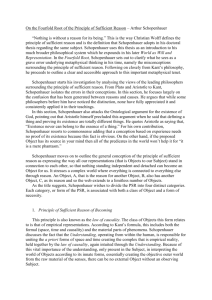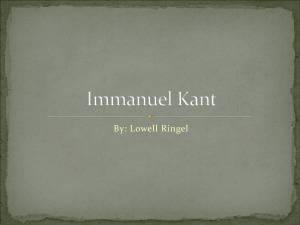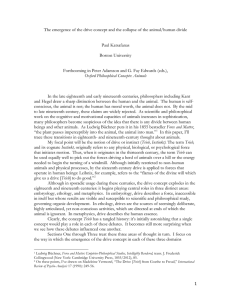CLIL – FILOSOFIA SCHOPENHAUER Schopenhauer described
advertisement
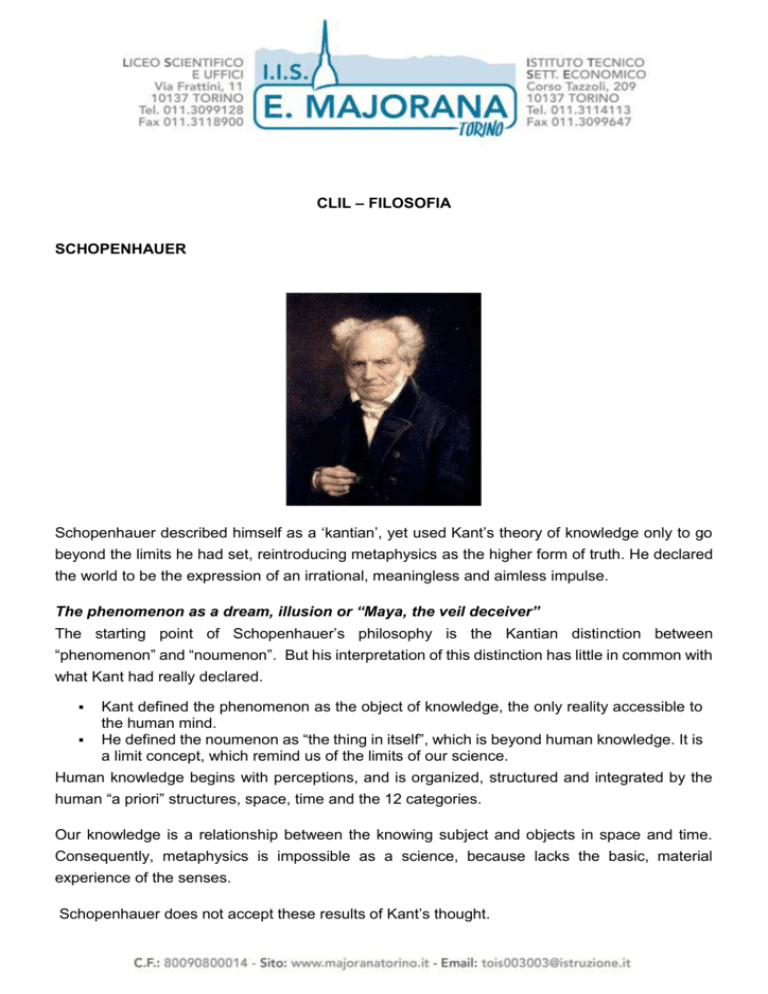
CLIL – FILOSOFIA SCHOPENHAUER Schopenhauer described himself as a ‘kantian’, yet used Kant’s theory of knowledge only to go beyond the limits he had set, reintroducing metaphysics as the higher form of truth. He declared the world to be the expression of an irrational, meaningless and aimless impulse. The phenomenon as a dream, illusion or “Maya, the veil deceiver” The starting point of Schopenhauer’s philosophy is the Kantian distinction between “phenomenon” and “noumenon”. But his interpretation of this distinction has little in common with what Kant had really declared. Kant defined the phenomenon as the object of knowledge, the only reality accessible to the human mind. He defined the noumenon as “the thing in itself”, which is beyond human knowledge. It is a limit concept, which remind us of the limits of our science. Human knowledge begins with perceptions, and is organized, structured and integrated by the human “a priori” structures, space, time and the 12 categories. Our knowledge is a relationship between the knowing subject and objects in space and time. Consequently, metaphysics is impossible as a science, because lacks the basic, material experience of the senses. Schopenhauer does not accept these results of Kant’s thought. The phenomenon, defined by Kant as the only possible object of science and knowledge, is, in Schopenhauer’s view, a “representation”, a semblance, illusion, dream, or, in Indian philosophy, “the veil of Maya’. Piercing the veil of illusion (phenomenon) and discovering the thing in itself (the Noumenon): the “will”. Schopenhauer argued that beyond the illusion (the representation or phenomenon) exists the true reality, the noumenon, beyond the reach of human experience. The noumenon is a reality that is “hiding” behind the deceptive plot of the phenomenon. But if our mind is closed by the horizon of representation, is it possible to pierce the veil of illusion? How is it possible to find the “Ariadne’s thread” to investigate the ultimate truth? Where can we find the secret passage, which introduces us into “the thing itself”? If we had only knowledge and “no body”, argues Schopenhauer, we would never get out of the phenomenal world, i.e. the external representation of us and things. But we can not only see our body from outside as a representation in space and time: we can also perceive it from inside. We can perceive our body living, enjoying and suffering. It is this basic experience which enables man to “pierce” the veil of the phenomenon and grasp the thing in itself. In fact, perceiving our body from inside, we discover that the profound essence of ourselves is the desire or “will” to live. The will we discover in ourselves is an overwhelming and irresistible impulse that drives us to live, exist and act. We are life and will to live more than intellect or knowledge. We understand that the nature, the reality and the world are nothing more than the expression of this irrational, meaningless and aimless impulse. The whole phenomenal world is nothing but the manner through which the will manifests itself in the representation of space and time. Hence the title of the masterpiece of Schopenhauer: “The World as Will and Representation”. (fonte: www.orizzontescuola.com - clilspagnolo.blogspot.it)
